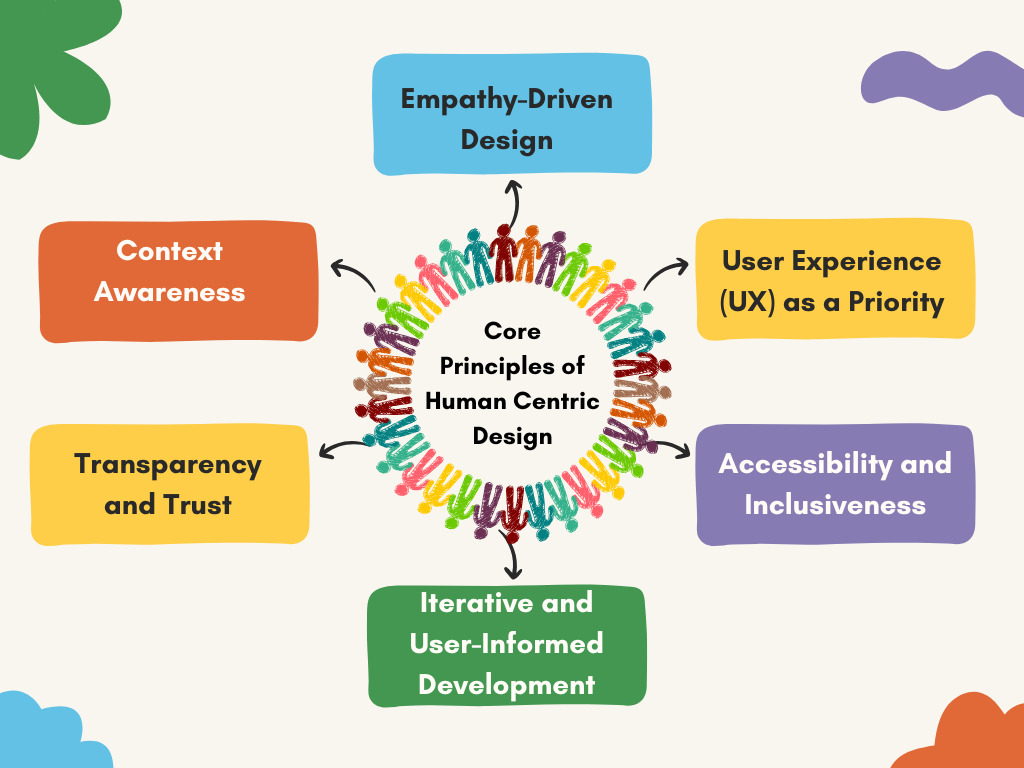Human-Centric Software: Where UX Meets Engineering
|
|
In the current era of digital transformation, software is no longer just a tool; it’s a deeply ingrained part of the human experience. The convergence of cyber and physical environments has encouraged end-users to make their technology choices not just based on operations but on non-functional requirements such as the feel, the emotions, and overall satisfaction.
At the same time, businesses are also primarily driven by software systems. Business operations rely on continuous interaction between humans and software technologies. The customer journey, from shopping and purchasing services to installing and engaging with them, cannot happen without software.
This interdependence of humans and software leaves us with an interesting question:
How can we guide software engineering, performance, and design in a direction that humans perceive as more engaging, persuasive, enriching, and satisfying?
This is exactly what human-centric software is aimed at.
| Key Takeaways: |
|---|
|
This article on human-centric software covers the following:
|
In this article, we will explore the human-centric software development and design in details with emphasis on its features, core principles, importance, challenges, and examples.

Human-Centric Software – Definition
Human-centric software is a software system having a deep understanding of the people or end-users who will use the software. Its main objective is to enhance the human capabilities, improve lives, and encourage meaningful interaction between humans and technology.
In contrast to tradition software that is either functional or system driven, whose main focus is on performance, scalability, or logic, human-centric software emphasizes on human feelings, emotions, and needs.
In other words, human-centric software systems care about people, what they want, and how it can provide them these things easily and intuitively.
The following are the key aspects of human-centric software:
- It emphasises user-first design by taking into account user feelings, needs, and emotions to provide them a satisfying experience.
- Human-centric software encourages early user involvement in the design and development process, providing feedback and insights that shape the final product.
- The software is developed and tested in iterations, with continuous feedback from users that drives the direction of development.
- Human-centered design is focused on human factors including human cognitive abilities, limitations, and emotional responses in addition to demographics and cultural factors.
- Human-centric software is adaptable to different user contexts and preferences.
Core Principles of Human-Centric Design
For software to be truly centered around humans, developers follow a variety of interrelated core principles. These principles are explained as follows:

1. Empathy-Driven Design
Empathy is the foundation of human-centric software design. Software developers and designers seek insights from users’ needs, motivations, frustrations, and goals. For this purpose, they conduct user interviews, behavior studies, and observe real-world examples in which software will be used. These are then incorporated into the design and development process.
2. User Experience Design as a Priority
User Experience (UX) is a driving force in human-centric design. A software feels good to use when it has clear navigation, visual harmony, responsiveness, minimal cognitive load, and efficient error handling. Users should enjoy using the software and find it valuable, leading to increased engagement and satisfaction. Read: UX in Software Development: A Practical Guide
3. Accessibility and Inclusiveness
A human-centric software is usable by everyone,regardless of physical ability, cognitive diversity, demographics, or cultural background. Human-centric software has accessibility features such as screen reader compatibility, high-contrast visuals, and keyboard navigation built into it from the beginning.
It ensures that the software is easy to navigate and use, with clear and concise interfaces that minimize cognitive load. Read: Accessibility Testing: Ensuring Inclusivity in Software
4. Iterative and User-Informed Development
Human-centric software is not built and released in isolation. Instead, the human-centric software development involves frequent prototyping, testing, and feedback loops. The feedback involves real-user experiences that help with refinement.
5. Transparency and Trust
Human-centric software is meant to be transparent about how data is collected and used so that it offers clear consent options and minimizes hidden features or manipulative design patterns.
Human-centric software development considers the potential impact of the software on users and society, ensuring that it is used ethically and responsibly.
6. Context Awareness
Human-centric software should be context-aware, it should adapt to the location, device, language, or user role. For example, app switching automatically to reading mode or health app modifying its tone during emergencies.
Human-Centric Software vs. System-Centric Software
Human-centric software differs from system-centric or traditional software in terms of its focus. While human-centric software focuses on emotions, feelings, and needs, system-centric software is more concerned with functionality and technical performance. The following table summarizes the main differences between the two systems:
| Aspect | Human-Centric Software | System-Centric Software |
|---|---|---|
| Goal | To serve human needs and experiences | To maximize technical performance or business objectives |
| Primary Focus | Focuses on user needs, behaviors, user satisfaction, accessibility, and emotional connection | Primarily focuses on functional requirements, efficiency, stability, and scalability |
| Design Approach | Follows a collaborative and iterative approach | Mainly uses a linear, top-down approach |
| Design Input | Takes into consideration user research and empathy | It is based on technical feasibility and business logic |
| Feedback Mechanism | Involves continuous user engagement | Only post-deployment user testing |
| Evaluation Metrics | Measures usability, retention, engagement, and NPS | Measures throughput, uptime, and cost savings |
| Outcome | Delightful, intuitive, and inclusive software application | A functional application that is often complex or impersonal |
Why Human Centered Design Matters?
The importance of human-centric software can be explained in the following ways:
- Technology Is Everywhere: From smartphones to smart homes and autonomous vehicles to robots, technology has permeated every aspect of life. Hence, it is not designed with people in mind, then instead of becoming an enabler, it will become a barrier.
- Competitive Differentiator: Software that is designed with user in mind and delivers exceptional user experience stands out in a crowded market. For example, tech giants like Apple constantly innovate so that their products stand out.
- Increased Adoption and Retention: If software satisfies users and is usable, helpful, and pleasant, they are more likely to adopt and retain it. This results in better ROI and sustainable business growth.
- Ethical Responsibility: With human-centric software, developers ensure that technology enhances human well-being, respects privacy, and avoids damage. Read: Top Mistakes in Software Standards Compliance
- Empowerment and Autonomy: Human-centric software systems empower marginalized groups, enable accessibility, and support creativity, education, and self-expression.
- Increased User Satisfaction: Users are more likely to be happy and satisfied with human-centric software as it is designed with their needs in mind.
- Enhanced Productivity: As human-centric software is designed to support user tasks and workflows, its productivity is increased.
- Reduced Errors: Human-centric software systems are designed with core principles in mind, have intuitive interfaces, and clear instructions that can help reduce user errors.
Real-World Examples of Human-Centric Software
Here are a few human-centric software examples in the real world:
1. Duolingo
This is a language learning app and blends gamification with education. The app has cheerful visuals, contests, encouraging messages with emojis, and personalized learning paths for all age groups.
2. Slack
Slack is a simplified, personalized, and extensible workplace communicator with features such as customizable notifications and emoji reactions to humanize work interactions. Additionally, it provides features like adding various channels based on specific purposes, reminders, huddles, etc.
3. Figma
Figma is a real-time collaborative tool with intuitive UI and live editing capabilities that are provided to UI designers. It reflects a deep understanding of team dynamics and creative workflows.
4. Palm Pilot
This tool prioritizes essential functionality for ultra-portable computing and is focused on delivering a user-friendly software. This approach has established Palm as a leader in the handheld computing industry.
5. Assistive Technology
Software tools for voice-to-text transcription, text-to-speech converters, screen readers, or communication aids for non-verbal audiences are classic examples of human-centric software. Their use enhances human capabilities and also saves lots of time and effort.
Challenges in Building Human-Centric Software
Despite its many advantages, creating human-centric software comes with significant hurdles:
- Balancing Business Goals and User Needs: Many times, business priorities may clash with users’ needs. Ethical judgement and smart compromises are required to resolve such conflicts.
- Scaling Personalization: Scaling human-centric software across diverse user bases while maintaining consistency is challenging, as it often relies on contextual or individualized experiences.
- Maintaining Inclusivity: Human-centric software designs for all users, including those with disabilities, language barriers, or low digital literacy. Maintaining this inclusivity requires time, resources, and specialized expertise.
- Evolving User Expectations: With software systems completely focused on their needs, user expectations rise rapidly. Continuous improvement is necessary to maintain momentum.
- Security and Privacy: Managing security and respecting user privacy is a growing concern, especially in AI-powered or data-rich apps.
Human Centered Design Methodologies
The human-centric software development process follows several design approaches. Some of them are explained here:
- Design Thinking: This methodology has users at the centre of the design process. Its emphasis on design thinking places users at the center of the design process. It emphasizes empathy, ideation, prototyping, and testing. The process is iterative in nature, and designers visit earlier stages as and when necessary, based on testing outcomes. Teams explore and understand problems from users’ perspectives before building solutions.
- User-Centered Design (UCD): In this approach, users are involved at every stage of the design and development process, from requirements gathering, design, testing, and evaluation. It uses prototypes and user testing to improve the design based on user feedback and ensure the product aligns with user needs and expectations.
- Human-Centered Software Engineering (HCSE): This approach is used mainly in industries like healthcare or aviation. It incorporates psychological and social aspects of users in the development process. It collaborates with experts from different fields and also addresses privacy, fairness, and accessibility in software design. The HCSE approach ensures systems are physically and cognitively compatible with human capabilities and limitations.
- Key Principles of Human-Centric Design: This methodology considers user needs and goals above everything else. It understands the context, environment, and circumstances under which software will be used and continuously refines the product based on testing and feedback. This approach delivers a user-friendly product by considering all aspects of user experience, including usability, aesthetics, and emotional response.
Future of Human-Centric Software
Here are some emerging trends for human-centric software:
- Co-Creation with Users: In the future, deeper collaboration with users as co-designers can be considered. Community-driven platforms and open-source models are leading this shift.
- Digital Well-being: A rise in applications that provide well-being, such as mindfulness apps, attention-aware browsers, or nudging systems that promote digital detox, is expected.
- Ethical and Inclusive AI: Human-centric principles may be embedded in algorithmic decision-making by a framework for ethical AI development as AI becomes more pervasive. Read: AI in Engineering – Ethical Implications
- Empathy-as-a-Service: Bond between humans and digital tools is expected to deepen with immersive training apps for healthcare workers or educators that teach or simulate empathy.
Conclusion
Human-centric software bridges the gap between code and compassion, systems and stories, algorithms and empathy. It is a philosophy for building technology that is designed for people and truly serves people.
Human-centric software is about putting the humans at the heart of the development process, creating technology that is not just functional but also effective, beneficial, and enjoyable for individuals and society.
As technology evolves continuously, the most successful software is not the most advanced or efficient, but the most understanding. Embracing human-centric principles is essential for creating tools that include, inspire, and empower.
| Achieve More Than 90% Test Automation | |
| Step by Step Walkthroughs and Help | |
| 14 Day Free Trial, Cancel Anytime |












